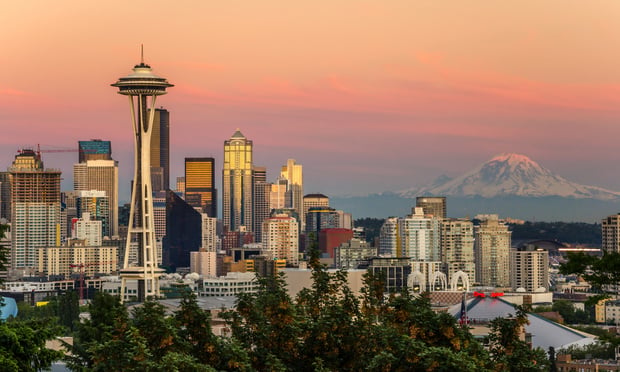Amazonís RTO Policy is Driving Foot Traffic Up in Seattle

Just weeks after Amazon required employees to return to the office full-time, foot traffic in downtown Seattle is surging.
Downtown Seattle recently recorded the second-highest daily average for weekday worker foot traffic since March 2020, according to data released by the nonprofit Downtown Seattle Association and reported by the Seattle Times. The city welcomed two million unique visitors last month, which represents 94% of the visitors the area saw in January 2019.
DSA president Jon Scholes said Amazonís decisions have a significant impact on the city as its largest employer. Demand for hotel rooms has increased 5% year-over-year, and the number of occupied apartment units increased 4% in January. About 50,000 people work in Amazonís Seattle locations, as well as 14,000 in Bellevue and 2,000 in Redmond.
In March 2020, just before pandemic-driven work-from-home mandates, foot traffic in downtown Seattle was between 60,000 and 70,000 people per weekday. During the next two years, foot traffic dropped to between 10,000 and 20,000 people per day. As of February 10, following Amazonís return-to-office requirement, foot traffic reached 47,509 per day.
Worker foot traffic has been lower on Mondays and Fridays than on days in the middle of the week in recent years, according to the DSA. In January, worker foot traffic on what had been the slowest days of the week increased 22% compared with December 2024 and 36% compared with the start of 2024, according to the Seattle Times.
Amazon said its RTO mandate is designed to foster collaboration, but some workers have pushed back, saying the requirement disproportionally affects workers who need flexibility. Previously, the company required employees to be in the office three days per week. Despite some resistance, employees do appear to be heading back to the office, the DSA data shows. Average worker foot traffic near Amazonís Seattle campus reached 74% of January 2019 norms last month, up from 62% a year ago. DSA derived its data from Placer.ai, which measures foot traffic based on cell phone location information.
In the South Lake Union and Denny Triangle area, the site of Amazonís Seattle office buildings, foot traffic increased 20% in January from last year, averaging 46,000 workers compared with 38,000 workers per day. Beyond those neighborhoods, worker foot traffic throughout downtown Seattle increased 9% year-over-year, reaching 57% of the January 2019 average.
Scholes said he expects foot traffic in Seattle to continue to increase as more companies follow Amazonís lead and warmer weather arrives. He predicted foot traffic could reach 60% of January 2019 levels by March and potentially two-thirds of pre-pandemic norms by summer.
Source: GlobeSt/ALM